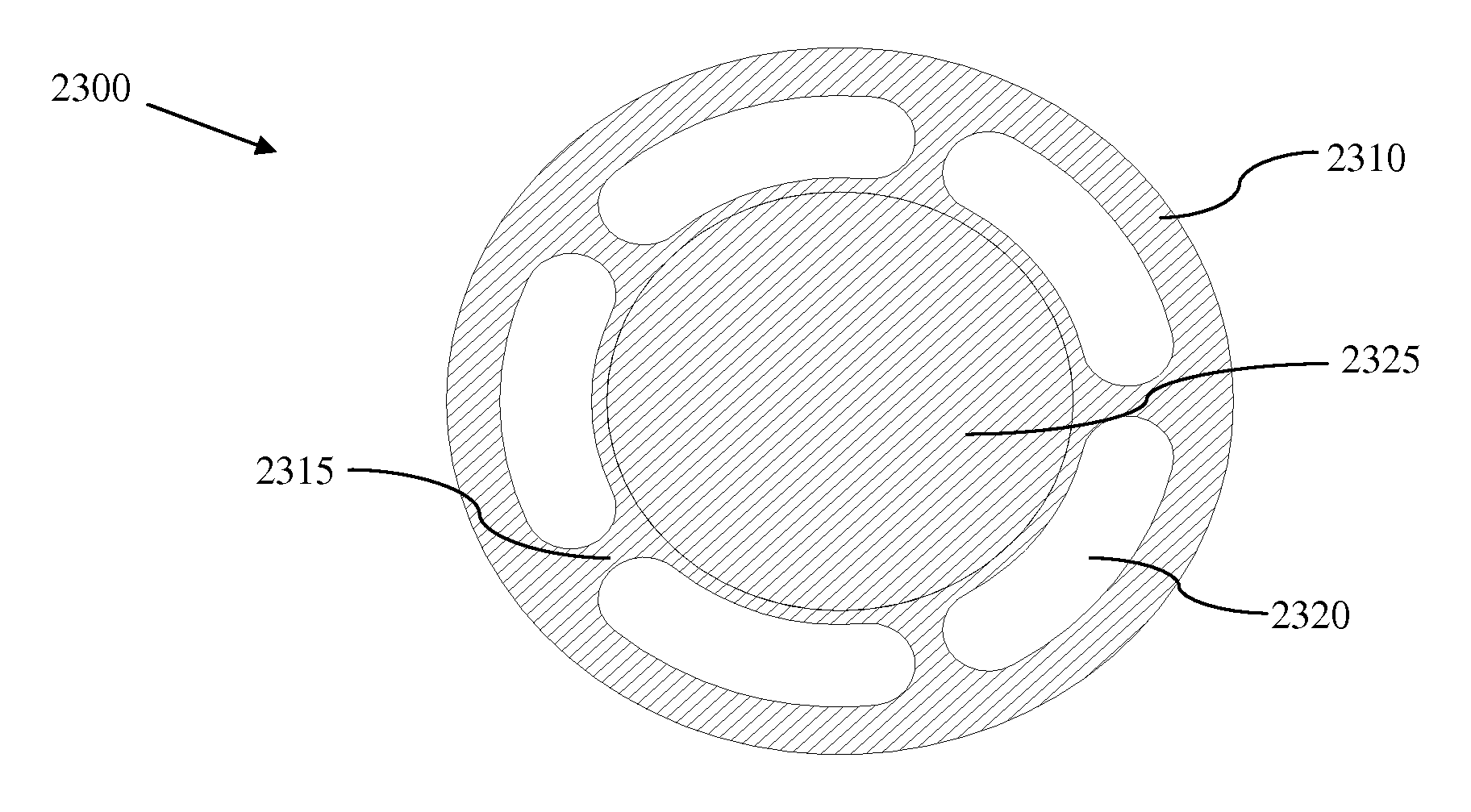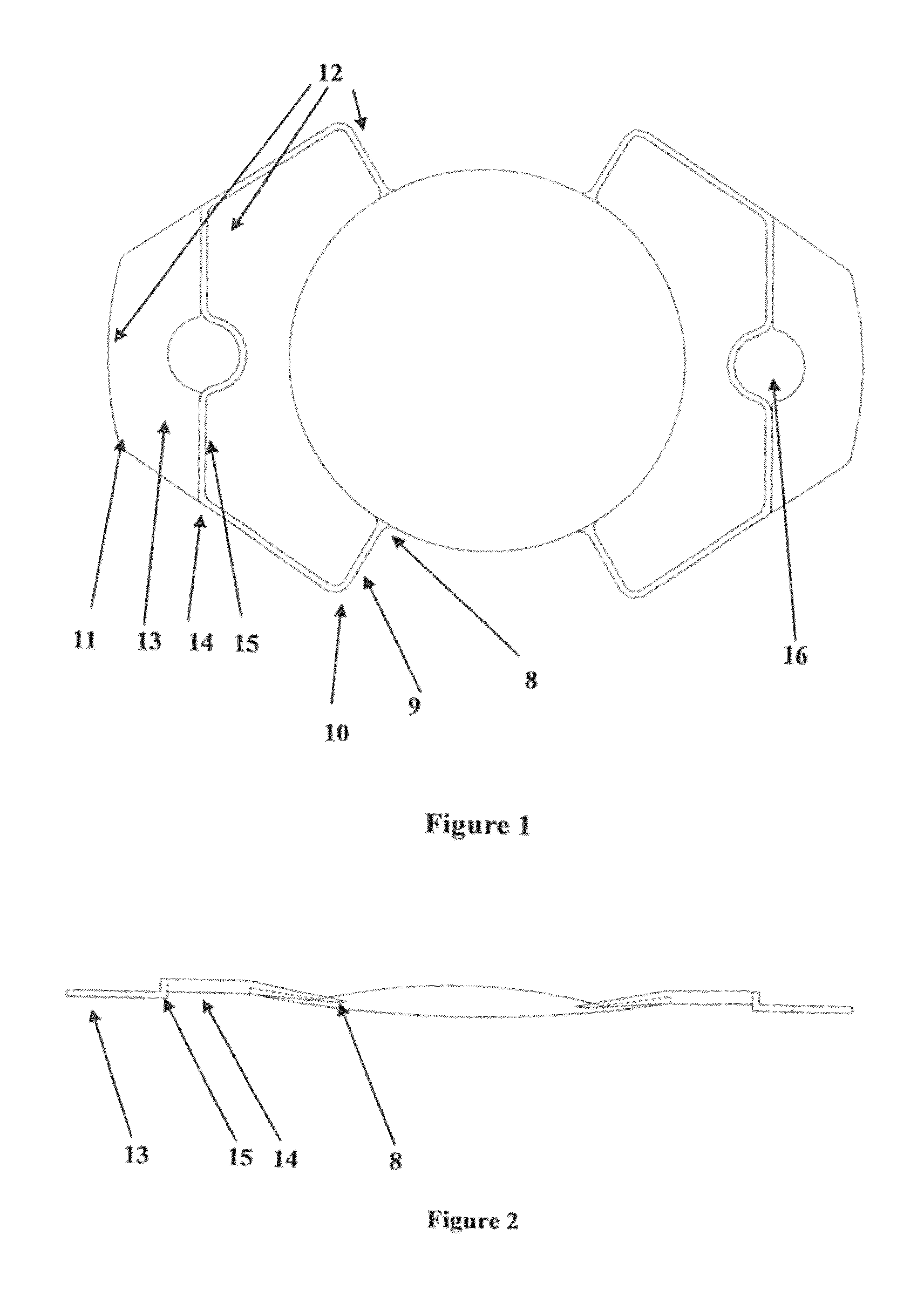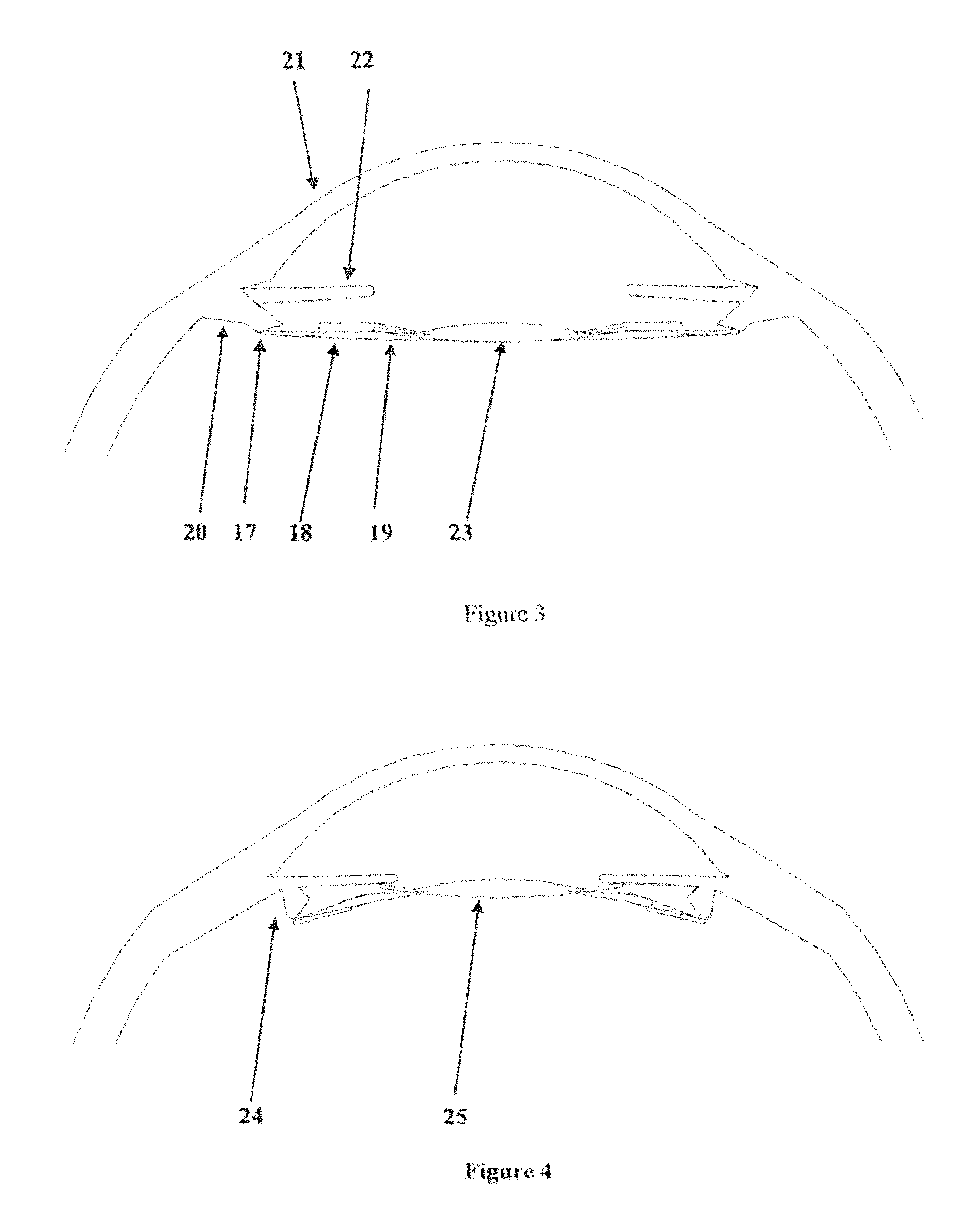Haptic devices for intraocular lens
a technology of haptic devices and intraocular lenses, which is applied in the field of haptic devices for intraocular lenses, can solve the problems of minor distortion of the optics, reduced or eliminated eye's ability to change focus (accommodate), and will not return cataracts, so as to reduce the amount of clearance, prevent cell migration, and reduce the effect of cell migration
- Summary
- Abstract
- Description
- Claims
- Application Information
AI Technical Summary
Benefits of technology
Problems solved by technology
Method used
Image
Examples
examples
[0070]Depicted in FIG. 1 is a top view of an intraocular lens with a haptic device, and FIG. 2, a sagittal view. The haptic attachment point 8 to optic is shown along with a ribbon shaped haptic extension 9 which is in a plane through the center of the optic and the attachment point. The ribbon shaped haptic arm intersection with a circular plane larger than the radius of the optic. The solid end portion of the haptic 13 intersects the outside diameter of the lens at a point that is parallel to a plane passing through the 12 o'clock and 6 o'clock positions of the lens. The overall shape of the haptic resembles a kidney with sharper curves where the lens optic makes up a portion of the kidney. Solid end portion 13 of the haptic is thinner than the ribbon shaped sections 9.
[0071]As depicted in FIG. 1, ribbon shaped haptic 9 lies between the solid portion 13 and the end of the extended arm 8. The ribbon shaped section of the haptic 9 is shown above the solid portion of the haptic 13 in...
PUM
 Login to View More
Login to View More Abstract
Description
Claims
Application Information
 Login to View More
Login to View More - R&D
- Intellectual Property
- Life Sciences
- Materials
- Tech Scout
- Unparalleled Data Quality
- Higher Quality Content
- 60% Fewer Hallucinations
Browse by: Latest US Patents, China's latest patents, Technical Efficacy Thesaurus, Application Domain, Technology Topic, Popular Technical Reports.
© 2025 PatSnap. All rights reserved.Legal|Privacy policy|Modern Slavery Act Transparency Statement|Sitemap|About US| Contact US: help@patsnap.com



